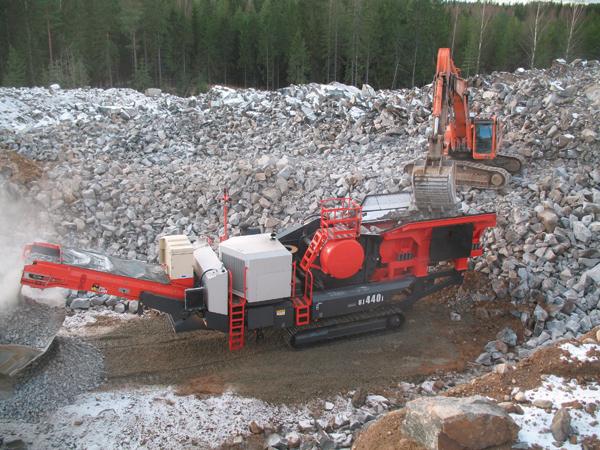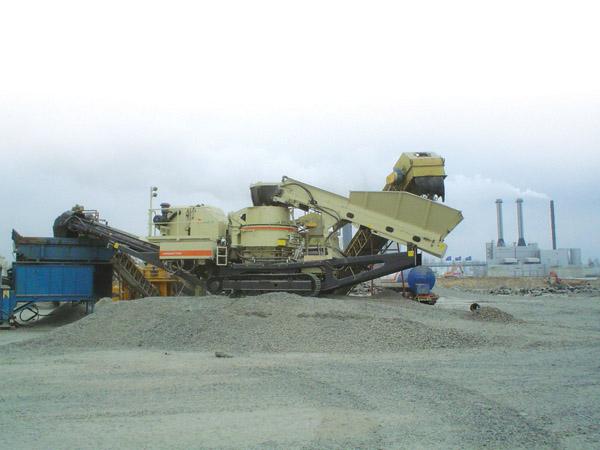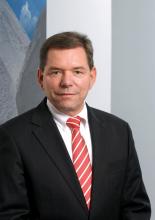
For the last 25 years Martti Kärkkäinen has managed the aggregates business of Finland-based Rudus. Claire Symes talked to him about his career with the company
In today's world few people stay with the same company for their whole career but when Martti Kärkkäinen retires later this year, he will be celebrating 38 years of working with
Rudus is Finland's leading aggregate producer with a sales volume of 22million tonnes in 2008 and, for the last 10 years, has also been part of the Ireland-headquartered
"The company is 100% owned by CRH and it has been since 1999, which has brought stability to the business and it is now the country's largest aggregates and ready mixed concrete producer, as well as a leader in recycled aggregates and concrete products," said Kärkkäinen.
Rudus started as a Helsinki-based sand and gravel company in 1931 but was bought by another Finnish cement and lime company Lohja Kalkkitehdas in 1939. Over the following 50 years Rudus continued to grow through acquisitions and organic growth, becoming the market leader in Helsinki, Turku, Tampere and Lahti.
Rudus' parent company was merged with another cement and lime company called Partek in 1992 before the joint business was sold to Euroc (then partly owned by
Kärkkäinen said that the change of ownership kept life interesting and the move to CRH control has brought professionalism, capital investment and continued strategic acquisitions, as well as a strong focus on safety.
Strategy
Kärkkäinen joined Rudus from university in 1972 and initially worked in the building materials division specialising in research and development of concrete and precast systems. The technology developed was exported to the Middle East and Germany.
In 1985 he was offered the chance to manage the company's aggregates business in southern Finland. It was in his early days in this role that he soon realised that to gain a competitive edge in the market, it was important to create a network of aggregate resources closer to customers than competitors. Over the next 10 years he worked to develop this strategy.
"The concept was well understood in the mid 1980s at Rudus, but it was part of my challenge to drive it forward through both organic and acquisitive growth," he said. "The aim was always to look 15 years ahead. It is always cheaper to buy the reserves that far ahead of their use, so it gives time to look ahead and ensure the reserves are close to customers. This proximity ensures that transportation costs - which can make up to 50% of the delivered aggregate price - are as low as possible." The strategy saw Rudus' business steadily grow and Kärkkäinen took over management of the entire aggregates division when the business merged with Partek in 1992. "At that time Rudus was delivering around 10million tonnes of aggregates annually from its own pits and quarries with half produced by its own production plants and the rest produced by bought in contract crushing companies," he said. "The aggregates business in Finland in the early 1990s was very fragmented and Rudus actively developed its business by targeting medium-sized aggregate suppliers as acquisition targets as a sustainable approach to becoming Finland's number one producer and supplier."
The company originally had a policy to operate stationary crushing plants in its biggest quarries and to use contractors in the smaller ones. "The downside was that the safety of contractors was not always as good," said Kärkkäinen. "In the 1980s the safety culture was not generally a top priority in Finland's aggregates industry.
"Aggregates were treated as a standardised bulk material at that time with price being the most important factor. Now the development of new demands and standards means that safety and the environment, as well as fulfilling customer needs in terms of quality and service, are at the top of the agenda." According to Kärkkäinen, safety is fundamentally a question of attitude and significant change requires continuous effort at all levels within an organisation. Rudus won a top Finnish safety award in 2008 thanks to its continual efforts which have delivered a 75% drop in the accident frequency rate over the last two years.
"We have invested substantial funds in physical improvements, such as machinery guarding, quarry edge protection and reversing cameras and so on. But we have also paid close attention to near miss recording, sign posting within the quarries and careful traffic planning," said Kärkkäinen.
To emphasise Rudus' commitment to ongoing safety improvement, Kärkkäinen said that the company has committed to providing every member of staff with a minimum of 16 hours of dedicated safety training this year.
Today Rudus has its own contract crushing business - Rudus Murskaus - which operates 22 transportable plants to meet external customer demand and internal needs. Last year Rudus Murskaus processed 17million tonnes of aggregates at 250 locations for its customers in Finland. To put this into context, Rudus itself currently operates a network of over 100 active pits and quarries in the country in any given year.
Top slot
Kärkkäinen said that one of the keys to Rudus' success in Finland and its progress to become the country's top aggregates supplier has been its approach of separating the business of production from that of being a quarry owner and seller of aggregates.
"Today Rudus' aggregates are mostly produced by transportable crushing plants and we have very few stationary plants. Most of the mobile machinery, including the loading and hauling equipment, is owned by contractors. This allows us to carefully manage costs with considerable flexibility because our only true fixed assets are our aggregate reserves and stationary crushing plants.
"Outsourcing in this way is not that uncommon in the industry but Rudus was one of the first to apply this concept right across its business in Finland." Around 90% of the aggregates supplied by Rudus are sold into the open market. The remaining 10% is used in the company's ready mixed concrete and concrete product businesses.
In addition to its strong aggregates position in Finland, Rudus also exports material to Estonia. "Some of these areas have a lack of hard aggregates and it makes sense for us to export material to meet the demand for hard asphalt stone," said Kärkkäinen.
While the company was an early adopter in terms of outsourcing, Rudus was also a pioneer when it came to concrete recycling in Finland and was active in the market in the mid 1990s when it was only just starting to be raised as an issue.
"We looked at how recycled aggregates could be used in the road construction and created a network of collection centres," said Kärkkäinen.
"Some areas of Europe, such as France, Denmark and the Netherlands, are doing well to increase recycling but other nations need to work harder to remove the obstacles to wider recycling. The problem is that the starting point has to be small and there is no money in the initial stages - aggregates need to be in large volumes to be profitable so some countries and companies may have to bite the bullet to be profitable in this area in the long term."
Fond farewell
This year will mark Kärkkäinen's last in the industry as he prepares to retire from Rudus - and give up his position as president of the Finnish Aggregates Association and member of the
"I will miss working in the industry - the people have become like a family over the years," he said. "I hope that I may still be able to be involved in the industry at some level after I leave Rudus." Kärkkäinen is currently working on passing on his knowledge and responsibilities to the next generation of managers at Rudus.










